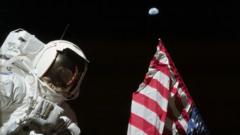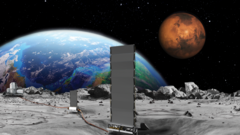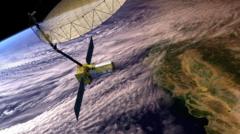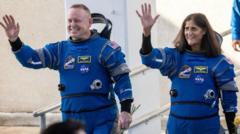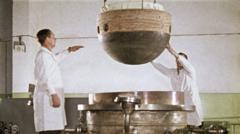The mission may lay the groundwork for sustainable food production on the International Space Station (ISS) and eventually on other planets.
**Growing Gourmet Space Food: A New Era for Astronaut Dining**
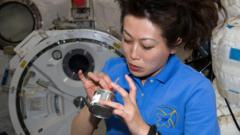
**Growing Gourmet Space Food: A New Era for Astronaut Dining**
An innovative ESA experiment aims to cultivate lab-grown meals for astronauts in space.
In a groundbreaking effort to redefine astronaut cuisine, a mission launched today aims to cultivate lab-grown food in space, with hopes of achieving a more sustainable and cost-effective culinary solution for future space missions. Funded by the European Space Agency (ESA), the experiment will investigate the potential to grow food like steak, mashed potatoes, and desserts right in orbit, overcoming the challenges of low gravity and elevated radiation levels.
The ESA project aspires to create a small pilot food production plant aboard the International Space Station (ISS) within the next two years, according to Dr. Aqeel Shamsul, CEO of Bedford-based Frontier Space. He asserts that developing sustainable food sources is crucial as NASA works towards making humanity a multi-planetary species. "Our dream is to have factories in orbit and on the Moon," Dr. Shamsul told reporters.
As astronauts have traditionally relied on freeze-dried meals, the cost of providing nutritionally balanced food to them can soar to an estimated £20,000 daily. This research aims to significantly cut expenses by growing food in space rather than relying solely on rocket deliveries. "In the long run, we could use 3D printing to create our meals," Dr. Shamsul explained, envisioning an era where astronauts can print dishes like steak on demand.
The process of lab-grown food involves cultivating proteins, fats, and carbohydrates in bioreactors—a method that, while currently practiced on Earth, has yet to be perfected in the unique conditions of space. A smaller version of a bioreactor has been dispatched to orbit aboard the Phoenix spacecraft, which will allow researchers to monitor how the ingredients fare in space before returning to Earth to refine their approach.
Dr. Rodrigo Ledesma-Amaro, Director of the Bezos Centre for Sustainable Proteins at Imperial College London, expressed confidence in the ability to produce almost any food ingredient via biotechnology, utilizing a specially engineered yeast. The mission, which includes sending samples for three hours in orbit, provides essential data to develop a larger bioreactor for future missions.
An intriguing component of the project is the involvement of Imperial College's culinary education designer, Jakub Radzikowski, who is crafting recipes using traditional ingredients. Awaiting regulatory approval to incorporate lab-grown elements, he aims to create diverse dishes that cater to astronauts’ tastes while providing a sense of comfort during long missions.
Positive feedback from Britain’s first astronaut Helen Sharman, who sampled some test dishes, highlighted the importance of flavor in keeping astronauts engaged and satisfied with their meals. With the potential to tailor food to astronauts’ unique nutritional needs, the venture promises not only to enhance their eating experience but also assists in their overall health management during missions.
As organizations pursue permanent human habitation on the Moon and Mars, the integration of lab-grown food into space missions may soon shift from lofty dreams to delectable realities. In achieving this, the future of space dining could transform in ways reminiscent of science fiction, paving the way for longer, healthier, and more enjoyable missions for astronauts around the cosmos.
The ESA project aspires to create a small pilot food production plant aboard the International Space Station (ISS) within the next two years, according to Dr. Aqeel Shamsul, CEO of Bedford-based Frontier Space. He asserts that developing sustainable food sources is crucial as NASA works towards making humanity a multi-planetary species. "Our dream is to have factories in orbit and on the Moon," Dr. Shamsul told reporters.
As astronauts have traditionally relied on freeze-dried meals, the cost of providing nutritionally balanced food to them can soar to an estimated £20,000 daily. This research aims to significantly cut expenses by growing food in space rather than relying solely on rocket deliveries. "In the long run, we could use 3D printing to create our meals," Dr. Shamsul explained, envisioning an era where astronauts can print dishes like steak on demand.
The process of lab-grown food involves cultivating proteins, fats, and carbohydrates in bioreactors—a method that, while currently practiced on Earth, has yet to be perfected in the unique conditions of space. A smaller version of a bioreactor has been dispatched to orbit aboard the Phoenix spacecraft, which will allow researchers to monitor how the ingredients fare in space before returning to Earth to refine their approach.
Dr. Rodrigo Ledesma-Amaro, Director of the Bezos Centre for Sustainable Proteins at Imperial College London, expressed confidence in the ability to produce almost any food ingredient via biotechnology, utilizing a specially engineered yeast. The mission, which includes sending samples for three hours in orbit, provides essential data to develop a larger bioreactor for future missions.
An intriguing component of the project is the involvement of Imperial College's culinary education designer, Jakub Radzikowski, who is crafting recipes using traditional ingredients. Awaiting regulatory approval to incorporate lab-grown elements, he aims to create diverse dishes that cater to astronauts’ tastes while providing a sense of comfort during long missions.
Positive feedback from Britain’s first astronaut Helen Sharman, who sampled some test dishes, highlighted the importance of flavor in keeping astronauts engaged and satisfied with their meals. With the potential to tailor food to astronauts’ unique nutritional needs, the venture promises not only to enhance their eating experience but also assists in their overall health management during missions.
As organizations pursue permanent human habitation on the Moon and Mars, the integration of lab-grown food into space missions may soon shift from lofty dreams to delectable realities. In achieving this, the future of space dining could transform in ways reminiscent of science fiction, paving the way for longer, healthier, and more enjoyable missions for astronauts around the cosmos.



